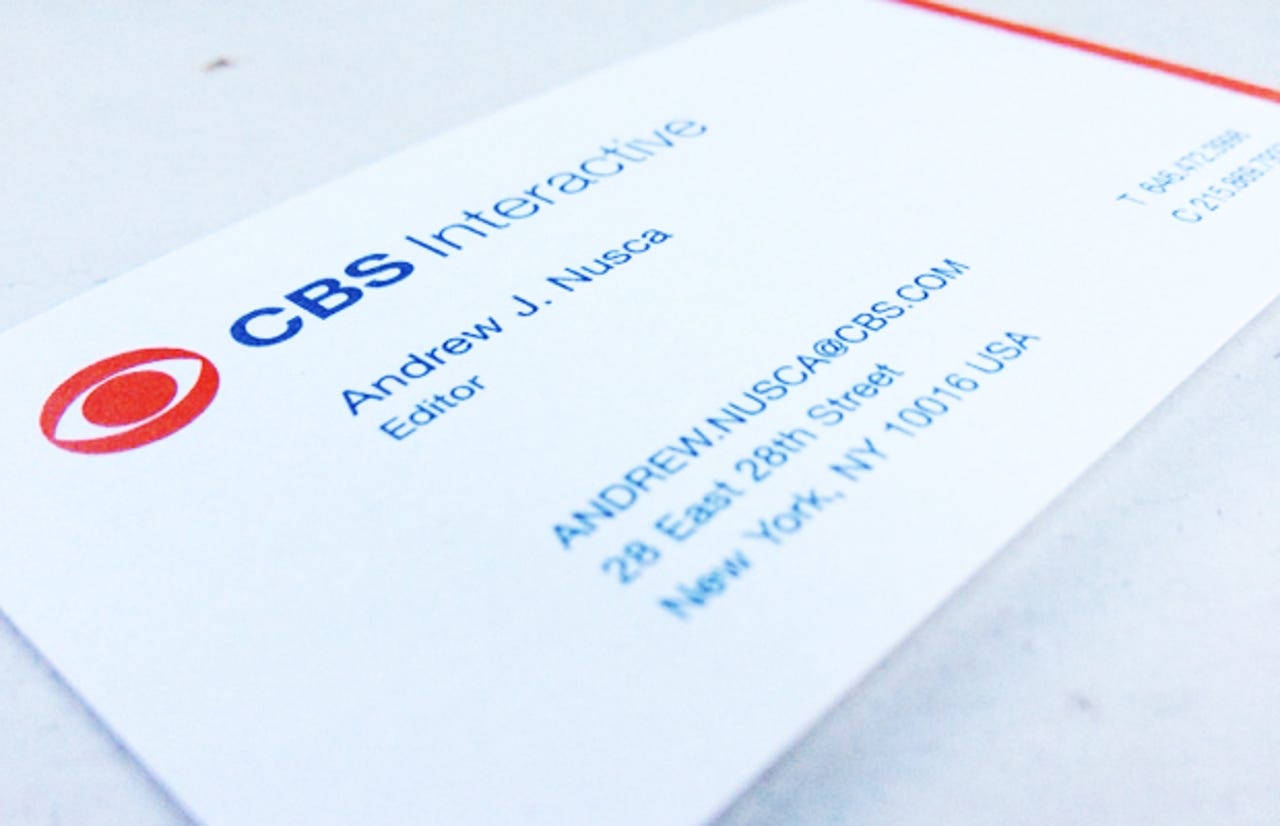The new must-have business tool


There's a hot new trend in the technology industry: business cards.
Now hold on, hold on, I know what you're going to say -- these have been around since the dawn of the age of the computer. That's true. In fact, they've been around since 17th century Europe, but I digress. But the Wall Street Journal wants you to know that there's a totally new kind of business card in style, one that unifies all your digital channels on a single piece of paper.
Novel!
Every year, there's a new trend piece about digital companies embracing analog habits, and business card stories usually take the cake.
A taste:
"You can't replace the simplicity of a piece of paper for sharing that info," says Albert Hwang, a 28-year-old digital artist in New York. The contact information on his paper cards is displayed as if it were computer text coding.
Fantastic! There's nothing more simple than computer code printed on paper.
All sarcasm aside, I continue to wonder what the value of a business card is today. We continue to accept and exchange them even as we acknowledge their uselessness, which demonstrates that we still feel that they serve some purpose. (And yet, I have piles and piles of them, stacked high like miniature skyscrapers, all around my office. How many of them have I referenced over the years? I can probably count those on one hand. Because chances are high that I'll just conduct a web search for what I'm looking for.)
The Journal's article is really about showcasing the latest trends in the design of the tech industry's business cards, from unusual materials to interactive, tech-embedded designs to cards that don't resemble cards at all. I've received many an interesting business card over the years -- as a member of the press, it's part of my job to collect these -- and some were certainly memorable. But that's just it: the cards were memorable, not the companies.
Nonetheless, I find it fascinating that no technologist has truly been able to devise and see adoption of a business card replacement -- yet there are few folks who wouldn't want that information automatically populating their communication channel of choice. (The only thing worse than collecting stacks of business cards is knowing you need the information on just one of them -- if only you could find it.) Sure, scanning software and Bump-like applications have been created to digitize and share this information, but adoption is hardly universal. (I have yet to have someone ask me to "bump" with them at a tech show. Judging by how that looks written out on this page, it's probably for the best.)
Until then, the industry's most cutting-edge, 21st century companies will use technology first developed in the 2nd century to exchange contact information about themselves. It's the next hot thing.